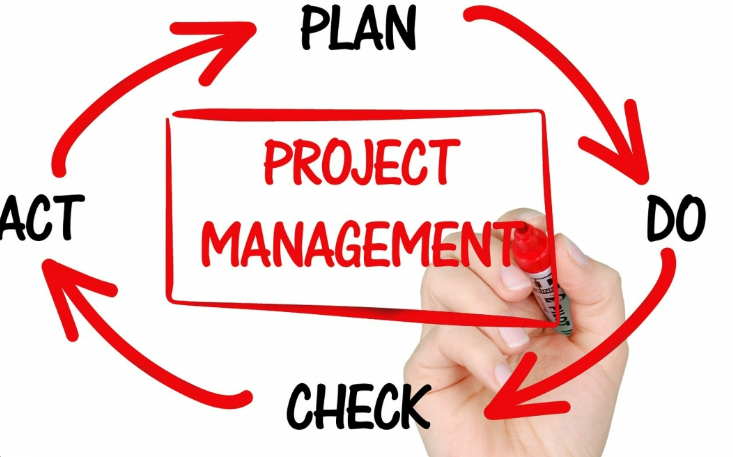The world is working at the speed of light and Agile Project Management is a quick and reliable way to fulfill the customers’ requirements in the Market.
Furthermore, Understanding – What is Agile Project Management? Its usefulness in Information Technology (IT) and different industries can give success over competitors to achieve targeted goals in less time. Additionally, artificial intelligence works as a catalyst for Agile project management, increasing the team’s efficiency and providing better project results.
What is Agile Project Management?
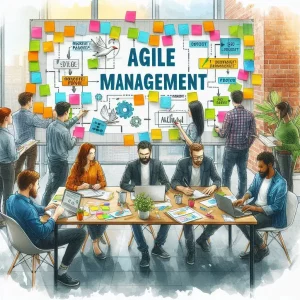
What is Agile Project Management? – it is a way of working and managing a project in which bigger work is divided into smaller, more achievable tasks called Sprint. Even more, Agile Project Management happens Incrementally. In other words, It is an iterative approach in which the complex work is completed with the association of project members and partners, to continuously improve, and give speedy results or faster delivery of the Value product.
Subsequently, What is Agile Project Management? – it is a customer-focused approach (Customer Feedback). Also, It depends on the uncertainties and unpredictability of the market. Moreover, The project’s life cycle has four parts: Initiating a project, Making a Plan, completing tasks, and closing the project. It is important to realize that Agile Project Management makes these steps more flexible and effective by involving the whole team and partners based on the Agile Manifesto.
In essence, the finest aspect of agile project management is that it applies to every Industry. Moreover, its ability to adapt, flexibility and deliver value products and services makes the agile methodology most favored.
Manifesto and 12 Principles -Agile Project Management
The Manifesto and 12 Principles are the core of Agile Project Management. Moreover, the Agile Manifesto and its Principles are developed by a group of Experienced Developers who want to help everyone through their work and the value it yields.
Agile Manifesto – Agile Project Management

12 Agile Principles
The 12 Agile principles developed by Software Developers are as follows.
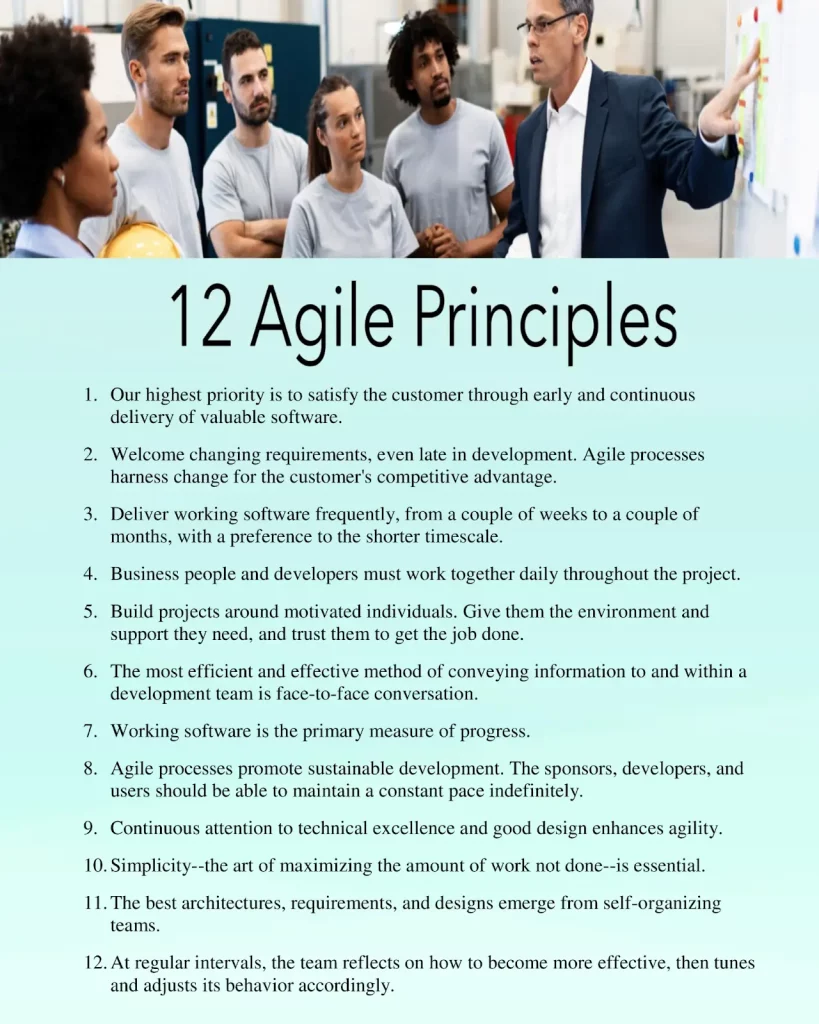
Comparison between Agile and Waterfall Methodology
Comparatively, The need for Agile Project Management arises due to the limitations of the Waterfall methodology. The agile project methodology follows the – Plan, Build, and Release approach – in small iterations, which gives an advantage to the Agile approach over the Waterfall approach. However, all Projects have different requirements, and some of the projects require a Hybrid approach in which a combination of both Agile and Waterfall Methodology is used.
| Key Difference | Agile Methodology | Waterfall Methodology |
| Approach | It takes an Iterative approach to the completion of a project. | It takes a sequential and a linear path to complete a project with well-defined conditions. Also, it takes a longer time to complete the project. |
| Leadership | The Scrum Master takes the lead and the team shares more responsibility for the work. | The Project Manager takes the lead and assigns work to each team member. |
| Project Initiation and Planning | Planning occurs in short Iterations as well as it adapts flexibility in response to customer feedback. | Planning occurs in the Initial Phases and is less likely to change. |
| Project Operation and Execution | Project Execution happens in small intervals called sprints to improve products and services by adding necessary changes. | It is completed in an uninterrupted process; Thus, it is the major disadvantage of Waterfall Methodology. Because, by the time the project is finished, market demand will change. |
| Product Delivery | Product Delivery usually happens in stages. | Delivery happens at the end as a major event. |
| Communication | Informal Communication with the stakeholder takes place in Agile at every stage. | Formal Communication takes place with the partners which involves sharing of progress reports. |
| Documentation | Shorter Documentation is created according to the needs of the project, to achieve the target. | Heavy Documentation happens at each step of the project. |
Common Agile Framework – Agile Project Management
It works in a step-by-step manner, In addition, teams and organizations use an Agile mindset. In other words, they use different Agile frameworks to achieve their target. There are many agile frameworks, here we describe some of them below:
Scrum Methodology
Basically, the idea of scrum arose from the game Rugby – The formation in the game to gain control over the ball – correspondingly, The Scrum Framework works in sprints (Short cycles) to achieve the goal through increasing development time in order to provide larger value (Quality) product.
Specifically, The Scrum Team starts to work with a daily scrum meeting, and the whole team will decide the best way to execute the plan on a project to assess the progress and to achieve the goal.
Generally, Scrum Methodology helps to develop software products and businesses.
Kanban Methodology
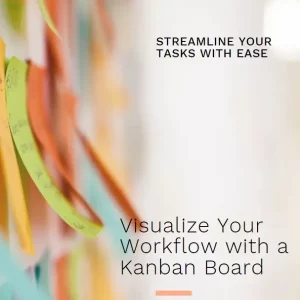
Kanban Framework uses the Kanban Board to visualize the workflow of the development of the project to the team members. Accordingly, when progress occurs, information in the table changes. When a new work arises, a new card is created. Even more, the Kanban methodology requires clear communication and transparency for every team member in order to know the status of the project at all times. Moreover, The Kanban methodology works with three components:
- Visualizing workflow
- Setting work-in-progress limits
- Meeting cadences
Besides, Kanban can be used for small changes at any time in the project.
Lean Methodology
This Framework was developed by Toyota.
Lean Framework removes unnecessary actions that do not yield value products. It does for faster delivery of high-quality products. The lean framework works on seven principles:
- Removing waste: Removing such actions or waste that do not produce effective value to customers.
- Quality Development: Discipline and control are needed in every step of project development for quality development. Because quality development reduces the mistakes and errors in development and enhances quality.
- Creating Knowledge: The value and knowledge created in the project can be used in the future.
- Differing commitments: The decision should be based on accurate information requirements according to the Market.
- Fast Delivery: It focuses on delivering products and services quickly to the customer.
- Respecting Team: Lean methodology focuses on respecting each team member for their work and their value to the project.
- Optimize the whole: Lean methodology focuses on the overall system rather than focusing only on the individual constituent so that improvement creates positivity and does not create problems in another area.
Extreme Programming (XP) Methodology
The Main Principle of Extreme Programming is to improve product quality according to changing customer needs. Especially, the XP Methodology tests the smaller and larger features of the product to get feedback before building the products. Further, XP Methodology takes the development process to an extreme level.
XP performs 4 activities to enhance product quality:
- Designing: Designing deals with designing documents and explaining parts of code or instructions of the product and its functions.
- Coding: Coding is the Instruction for computers that tells what to do. Moreover, XP demands clear and concise code so people can understand it easily.
- Testing: To check any product flaws and remove them before building to meet customer requirements.
- Listening: Listening to Customer and changes according to their requirement and merging changes into the product.
The Benefits of Agile Project Management

It can be used in every Industry as its principles, practices, and features benefit businesses. Furthermore, these are core advantages of Agile Project Management.
- High-Quality Value Product: Agile Methodology provides high-quality value products via continuous improvement and quality assurance because of customer feedback, Consequently, it meets customer’s expectations. Additionally, the team tests every work to identify and solve problems to provide high-quality products.
- Quick Delivery of Product: Agile supports faster delivery of products to fulfill the demand of businesses on time. Further, The Iterative approach helps the team to deliver the product quickly.
- Adaptability and Flexibility: Agile Methodology offers flexibility to the team members at any stage of project completion according to the customer’s expectations. This adaptation is the major advantage of Agile Project Management because the team dynamically adapts to any changes even in the last moment of the project and project delivery.
- Transparency: Agile Methodology gives a clear and transparent picture of project progress with regular checkups to detect issues, ensuring the final product’s quality.
- Predictability: Further, Agile Methodology eases the work of team members and stakeholders through a better understanding of the project and its outcome.
- Better Risk Management: It assists in risk management to prevent losses i.e. Financial loss, talent loss, etc. During the project meeting, all risks associated with the project were categorically divided and discussed. After that, further suitable action will be taken to solve the problems and risks involved with the project.
- Customer collaboration and Satisfaction: Lastly, Customer collaboration clarifies to the team and product owners what the project outcome which ultimately leads to customer satisfaction.
What is Agile Project Management with Artificial Intelligence

Artificial intelligence (AI) is gradually becoming more prevalent in every area. Further, the latest technology such as Machine Learning and Deep Learning makes the Agile Project Management process easier for the Teams to focus on more critical work and provide enhanced value products.
Artificial Intelligence energizes Agile Project Management with its capabilities. For Example,
- Prediction of Market Trends
- Quick Feedback from Customer
- Quality assurance of Product
- Project progress and tracking as well as Transparency
- High-value Product
- Faster Delivery of Product
AI maximizes overall Agile Methodology efficiency. Even more, AI in Agile Project Management is the future, where businesses flourish and Teams manage projects more effectively and efficiently.
Agile Tools with AI
Chiefly, Agile methodology largely depends on the management of the project to achieve the intended goal. Further, As the project progresses, these software development tools AKA Agile Tools are used to apply agile methodology in projects. Henceforth, Agile tools provide many features such as sprint planning, tracking, organizing work, transparency, and fast delivery of the product to assist in Project Management. Furthermore, Artificial Intelligence (AI) boosted the capabilities of these Agile Tools.
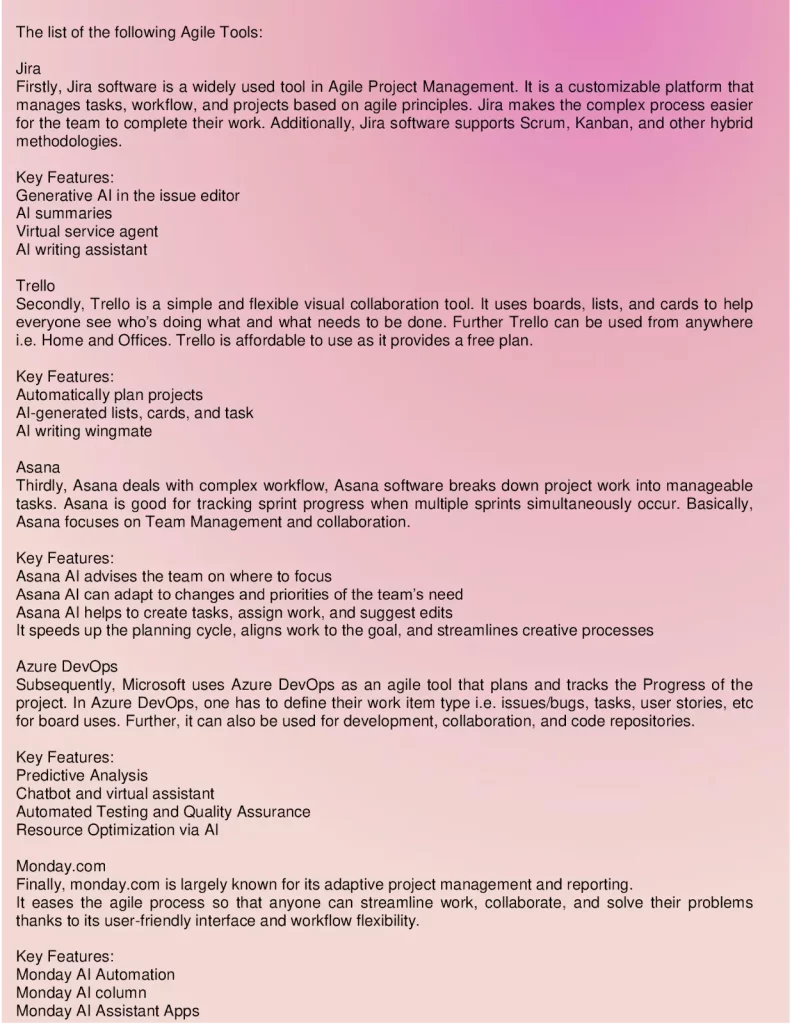
Learn with Eduwatts What is Agile Project Management ?

The first thing to remember, Eduwatts has been a well-known company for decades. Eduwatts provides Agile Project Management Course Training for individuals who want to excel professionally in Project Management. Furthermore, This is a Course Designed by Working Professionals from various International companies for Professionals.
Eduwatts Agile Project Management Course
- Duration – 32 Hours
- Total Module – 8
- Student Enrolled – 18114
- Language – English
- Certificate – Yes
- Rating – 4.8
What you will learn
- Introduction to Agile Project Management
- Agile Framework and Methodologies
- Agile Project Planning and Execution
- Agile Roles and Responsibilities
- Agile Tools and SAP Integration
- Managing Agile Projects in SAP
- Measuring and Reporting Agile Project Performance
- Troubleshooting
Conclusion
In conclusion, Agile project management is the strong foundation for most projects in the IT industry. Furthermore, Agile Project Management makes work easy for the team as well as for customers in the delivery of value products. Moreover, Agile Tools play a crucial role in the Management of Projects. Further, the Integration of Artificial Intelligence increases the Capacity of the workforce. Finally, it is useful in every industry which increases the demand for professionals with Agile Project Management Skills.
FAQs
A.1 Currently, There are no pre-conditions to pursue this Course.
A.2 Indeed, Anyone from any Educational background can do this course. Also, Institutes provide Online as well as Offline Education, So anyone can study from anywhere according to their choices.
A.3 Many Career opportunities after completing this course, a few of them are described below:
1. Project Manager
2. Scrum Master
3. Portfolio Manager
4. Program Manager
A.4 AI boosts the capabilities of Agile Project Management to increase productivity and outcome.


